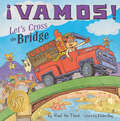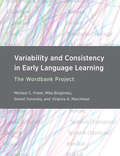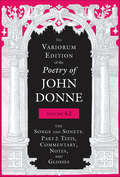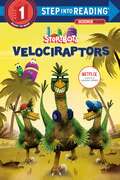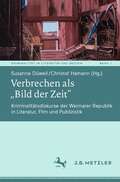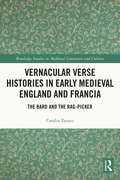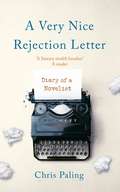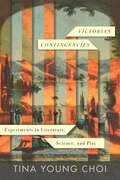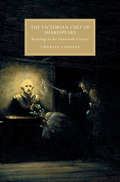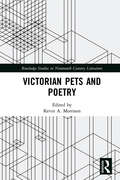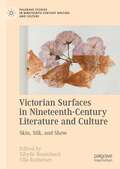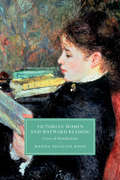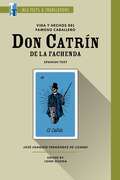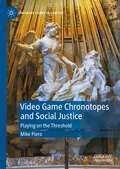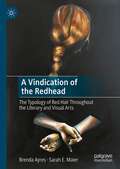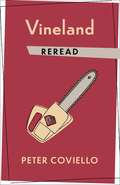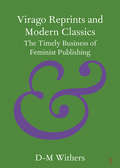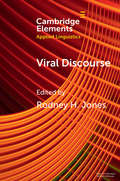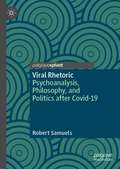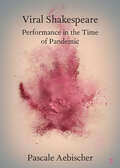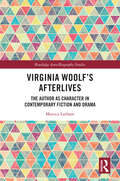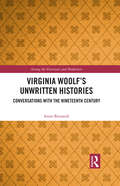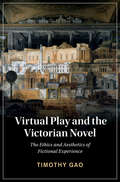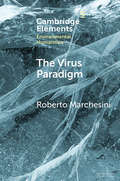- Table View
- List View
¡Vamos! Let's Cross the Bridge (World of ¡Vamos!)
by Raúl the Third IIIWinner of the Pura Belpré Medal! A New York Times Best Illustrated Children's Book!Little Lobo and Bernabé return in ¡Vamos! Let’s Cross the Bridge, a joyful picture book follow-up to ¡Vamos! Let’s Go Eat about coming together and celebrating community from New York Times bestselling, three-time Pura Belpré Award–winning author-illustrator Raúl the Third.People are always crossing the bridge for work, to visit family, or for play. Some going this way; others going that way. Back and forth they go. With friends on foot and in bicycles, in cars and trucks, the bridge is an incredibly busy place with many different types of vehicles.Little Lobo and his dog Bernabé have a new truck and they are using it to carry party supplies over the bridge with their pals El Toro and La Oink Oink. The line is long and everyone on the bridge is stuck. How will they pass the time?
Variability and Consistency in Early Language Learning: The Wordbank Project
by Michael C. Frank Mika Braginsky Daniel Yurovsky Virginia A. MarchmanA data-driven exploration of how children's language learning varies across different languages, providing both a theoretical framework and reference.The Wordbank Project examines variability and consistency in children's language learning across different languages and cultures, drawing on Wordbank, an open database with data from more than 75,000 children and twenty-nine languages or dialects. This big data approach makes the book the most comprehensive cross-linguistic analysis to date of early language learning. Moreover, its data-driven picture of which aspects of language learning are consistent across languages suggests constraints on the nature of children's language learning mechanisms. The book provides both a theoretical framework for scholars of language learning, language, and human cognition, and a resource for future research.
The Variorum Edition of the Poetry of John Donne, Volume 4.2: The Songs and Sonets (The Variorum Edition of the Poetry of John Donne)
by John DonneThis volume, the ninth in the series of The Variorum Edition of the Poetry of John Donne, presents newly edited critical texts of 25 love lyrics. Based on an exhaustive study of the manuscripts and printed editions in which these poems have appeared, Volume 4.2 details the genealogical history of each poem, accompanied by a thorough prose discussion, as well as a General Textual Introduction of the Songs and Sonets collectively. The volume also presents a comprehensive digest of the commentary on these Songs and Sonets from Donne's time through 1999. Arranged chronologically within sections, the material for each poem is organized under various headings that complement the volume's companions, Volume 4.1 and Volume 4.3.
Velociraptors (Step into Reading)
by Scott EmmonsThe curious crew from the Netflix series Ask the StoryBots star in an all-new Step into Reading leveled reader!Get ready to meet the rapping velociraptors. They've got pointy teeth, sharp claws, and mad rhymes. Based on a favorite StoryBots adventures, this Step 1 Science Reader will entertain boys and girls ages 4 to 6 while imparting a few fun facts about these popular carnivorous creatures.Step 1 Readers feature big type and easy words for children who know the alphabet and are eager to begin reading. Rhyme and rhythmic text is paired with picture clues to help children decode the story.
Verbrechen als „Bild der Zeit“: Kriminalitätsdiskurse der Weimarer Republik in Literatur, Film und Publizistik (Kriminalität in Literatur und Medien #1)
by Christof Hamann Susanne DüwellWährend der Zeit der Weimarer Republik entsteht ein breites Spektrum an Verbrechensdarstellungen und Reflexionen über Kriminalität, das erst zum Teil bzw. in Einzelstudien erforscht ist. Zudem stehen vor allem ausgewählte kanonische kriminalliterarische Texte und Filme im Zentrum des Interesses. Ziel des geplanten Bandes ist es, gerade die Vielfalt und Bandbreite an Darstellungsformen und diskursiven Verhandlungen von Kriminalität zwischen 1918 und 1933 zu diskutieren und dabei literatur-, medien-, diskurs- und wissensgeschichtliche Perspektiven miteinander zu verbinden.
Vernacular Verse Histories in Early Medieval England and Francia: The Bard and the Rag-picker
by Catalin TaranuIn a provocative take on Germanic heroic poetry, Taranu reads texts like Beowulf, Maldon, and the Waltharius as participating in alternative modes of history-writing that functioned in a larger ecology of narrative forms, including Latinate Christian history and the biblical epic. These modes employed the conceit of their participating in a tradition of oral verse for a variety of purposes: from political propaganda to constructing origin myths for early medieval nationhood or heroic masculinity, and sometimes for challenging these paradigms. The more complex of these historical visions actively meditated on their own relationship to truthfulness and fictionality while also performing sophisticated (and often subversive) cultural and socio-emotional work for its audiences. By rethinking canonical categories of historiographical discourse from within medieval textual productions, Vernacular Verse Histories in Early Medieval England and Francia: The Bard and the Rag-Picker aims to recover a part of the wide array of narrative poetic forms through which medieval communities made sense of their past and structured their socio-emotional experience.
A Very Nice Rejection Letter: Diary of a Novelist
by Chris Paling'Like all good diarists Paling's musings are funny, tender and uncensored' Sunday Times6 April 2007Writing income for the year so far: minus £300'I feel that this might just be the year in which something happens. Then again it might not. But hope drives all writers on.'It's unlikely that you'll know Chris Paling's face or have heard his name. This is his diary of trying to make a living as a writer, through the typical career trajectory of what is deemed a 'mid-list novelist'. Publishing rule 6: there is no such thing as a 'low-list' novelist.In renumeration terms, writing is a career that often ends in disappointment and despair, and occasionally disgrace. Paling artfully explores what compels him and so many others to write - the battling joys and agonies of when that compulsion beds itself in one's psyche, and a day without writing is a day wasted. A fascinating insight into the writing process, he tracks the need to write something new, or something old in a new way, something relevant, something that needs to be written when very little actually does, in search of that ever-elusive goal of being 'in print'.By turns moving, wry and brutally honest, A Very Nice Rejection Letter unveils the rewarding yet soul-baring life of a novelist. At its heart is a love letter to the art of writing but this delightful book is also a profound reflection on the forces that drive us all.
Victorian Contingencies: Experiments in Literature, Science, and Play
by Tina Young ChoiContingency is not just a feature of modern politics, finance, and culture—by thinking contingently, nineteenth-century Britons rewrote familiar narratives and upended forgone conclusions. Victorian Contingencies shows how scientists, novelists, and consumers engaged in new formal and material experiments with cause and effect, past and present, that actively undermined routine certainties. Tina Young Choi traces contingency across a wide range of materials and media, from newspaper advertisements and children's stories to well-known novels, scientific discoveries, technological innovations. She shows how Charles Lyell and Charles Darwin reinvented geological and natural histories as spaces for temporal and causal experimentation, while the nascent insurance industry influenced Charles Babbage's computational designs for a machine capable of responding to a contingent future. Choi pairs novelists George Eliot and Lewis Carroll with physicist James Clerk Maxwell, demonstrating how they introduced possibility and probability into once-assured literary and scientific narratives. And she explores the popular board games and pre-cinematic visual entertainments that encouraged Victorians to navigate a world made newly uncertain. By locating contingency within these cultural contexts, this book invites a deep and multidisciplinary reassessment of the longer histories of causality, closure, and chance.
The Victorian Cult of Shakespeare: Bardology in the Nineteenth Century (Cambridge Studies in Nineteenth-Century Literature and Culture)
by Charles LaPorteIn the Victorian era, William Shakespeare's work was often celebrated as a sacred text: a sort of secular English Bible. Even today, Shakespeare remains a uniquely important literary figure. Yet Victorian criticism took on religious dimensions that now seem outlandish in retrospect. Ministers wrote sermons based upon Shakespearean texts and delivered them from pulpits in Christian churches. Some scholars crafted devotional volumes to compare his texts directly with the Bible's. Still others created Shakespearean societies in the faith that his inspiration was not like that of other playwrights. Charles LaPorte uses such examples from the Victorian cult of Shakespeare to illustrate the complex relationship between religion, literature and secularization. His work helps to illuminate a curious but crucial chapter in the history of modern literary studies in the West, as well as its connections with Biblical scholarship and textual criticism.
Victorian Pets and Poetry (Routledge Studies in Nineteenth Century Literature)
by Kevin A. MorrisonSome of the most celebrated poets of the Victorian era wrote—at times movingly or humorously—about their pets. They did so in a wider literary context, for poetry about pets was ubiquitous in the period. Animal welfare organizations utilized poems about canine and feline suffering in institutional publications to call attention to various abuses. Elegies and epitaphs over the loss of a beloved cat, songbird, or dog were printed on funeral cards, tombstones, and appeared in mass-produced poetry collections as well as those intended for an intimate circle of friends. Yet poems about pets, as well as attendant issues such as breeding and overpopulation, have not received the kind of critical analysis devoted to fictional works and short stories. With an introduction, afterword, and eight essays offering new perspectives on significant as well as lesser known poems, Victorian Pets and Poetry remedies this omission.
Victorian Surfaces in Nineteenth-Century Literature and Culture: Skin, Silk, and Show (Palgrave Studies in Nineteenth-Century Writing and Culture)
by Sibylle Baumbach Ulla RatheiserThis volume explores the politics and poetics of Victorian surfaces in their manifold manifestations. In so doing, it examines various cultural products ‘as they are’ and highlights the art of surface composition in the Victorian era as well as the socio-cultural ramifications of the preoccupation with the exterior. By closely reading the various surfaces materialising in Victorian literature and culture, the individual contributions explore the dialectics of surface and depth in Victorian (and Neo-Victorian) cultures as well as the legibility of surfaces. They look into the surfaces of literary narratives, paintings, and film but also into natural surfaces such as skin or bark. Each chapter foregrounds what is present rather than absent in a text, while also paying attention to the surfaces that become manifest on the diegetic level of the text, be they cloth, landscapes, or human bodies or faces.This is an open access book.
Victorian Women and Wayward Reading: Crises of Identification (Cambridge Studies in Nineteenth-Century Literature and Culture)
by Marisa Palacios KnoxIn the nineteenth century, no assumption about female reading generated more ambivalence than the supposedly feminine facility for identifying with fictional characters. The belief that women were more impressionable than men inspired a continuous stream of anxious rhetoric about “female quixotes”: women who would imitate inappropriate characters or apply incongruous frames of reference from literature to their own lives. While the overt cultural discourse portrayed female literary identification as passive and delusional, Palacios Knox reveals increasing accounts of Victorian women wielding literary identification as a deliberate strategy. Wayward women readers challenged dominant assumptions about “feminine reading” and, by extension, femininity itself. Victorian Women and Wayward Reading contextualizes crises about female identification as reactions to decisive changes in the legal, political, educational, and professional status of women over the course of the nineteenth century: changes that wayward reading helped women first to imagine and then to enact.
Vida y hechos del famoso caballero don Catrín de la Fachenda: An MLA Text Edition (Texts and Translations #37)
by José Joaquín Fernández de LizardiDon Catrín de la Fachenda is a picaresque novel by the Mexican writer José Joaquín Fernández de Lizardi (1776-1827), best known as the author of El Periquillo Sarniento (The Itching Parrot), often called the first Latin American novel. Don Catrín is three things at once: a rakish pícaro in the tradition of the picaresque; a catrín, a dandy or fop; and a criollo, a person born in the New World and belonging to the same dominant class as their Spanish-born parents but relegated to a secondary status. The novel interrogates then current ideas about the supposed innateness of race and caste and plays with other aspects of the self considered more extrinsic, such as appearance and social disguise. While not directly mentioning the Mexican wars of independence, Don Catrín offers a vivid representation of the political and social frictions that burst into violence around 1810 and gave birth to the independent countries of Latin America.
Video Game Chronotopes and Social Justice: Playing on the Threshold (Palgrave Games in Context)
by Mike PieroVideo Game Chronotopes and Social Justice examines how the chronotope, which literally means “timespace,” is an effective interpretive lens through which to understand the cultural and ideological significance of video games. Using ‘slow readings’ attuned to deconstruction along the lines of post-structuralist theory, gender studies, queer studies, continental philosophy, and critical theory, Mike Piero exposes the often-overlooked misogyny, heteronormativity, racism, and patriarchal structures present in many Triple-A video games through their arrangement of timespace itself. Beyond understanding time and space as separate mechanics and dimensions, Piero reunites time and space through the analysis of six chronotopes—of the bonfire, the abject, the archipelago, the fart as pharmakon, madness, and coupled love—toward a poetic meaning making that is at the heart of play itself, all in affirmation of life, equity, and justice.
A Vindication of the Redhead: The Typology of Red Hair Throughout the Literary and Visual Arts
by Brenda Ayres Sarah E. MaierA Vindication of the Redhead investigates red hair in literature, art, television, and film throughout Eastern and Western cultures. This study examines red hair as a signifier, perpetuated through stereotypes, myths, legends, and literary and visual representations. Brenda Ayres and Sarah E. Maier provide a history of attitudes held by hegemonic populations toward red-haired individuals, groups, and genders from antiquity to the present. Ayres and Maier explore such diverse topics as Judeo-Christian narratives of red hair, redheads in Pre-Raphaelite paintings, red hair and gender identity, famous literary redheads such as Anne of Green Gables and Pippi Longstocking, contemporary and Neo-Victorian representations of redheads from the Black Widow to The Girl with the Dragon Tattoo, and more. This book illuminates the symbolic significance and related ideologies of red hair constructed in mythic, religious, literary, and visual cultural discourse.
Vineland Reread (Rereadings)
by Peter CovielloVineland is hardly anyone’s favorite Thomas Pynchon novel. Marking Pynchon’s return after vanishing for nearly two decades following his epic Gravity’s Rainbow, it was initially regarded as slight, a middling curiosity. However, for Peter Coviello, the oft-overlooked Vineland opens up new ways of thinking about Pynchon’s writing and about how we read and how we live in the rough currents of history.Beginning with his early besotted encounters with Vineland, Coviello reads Pynchon’s offbeat novel of sixties insurgents stranded in the Reaganite summer of 1984 as a delirious stoner comedy that is simultaneously a work of heartsick fury and political grief: a portrait of the hard afterlives of failed revolution in a period of stifling reaction. Offering a roving meditation on the uses of criticism and the practice of friendship, the fashioning of publics and counterpublics, the sentence and the police, Coviello argues that Vineland is among the most abundant and far-sighted of late-century American excursions into novelistic possibility. Departing from visions of Pynchon as the arch-postmodernist, erudite and obscure, he discloses an author far more companionable and humane. In Pynchon’s harmonizing of joyousness and outrage, comedy and sorrow, Coviello finds a model for thinking through our catastrophic present.
Vinnie the Dove: Targeting the v Sound (Speech Bubbles 2)
by Melissa PalmerVinnie loves to dive in water, but it always makes him so cold! Join him on his mission to find a way to finally get warmed up. This picture book targets the /v/ sound and is part of Speech Bubbles 2, a series of picture books that target specific speech sounds within the story. The series can be used for children receiving speech therapy, for children who have a speech sound delay/disorder, or simply as an activity for children’s speech sound development and/or phonological awareness. They are ideal for use by parents, teachers or caregivers. Bright pictures and a fun story create an engaging activity perfect for sound awareness. Picture books are sold individually, or in a pack. There are currently two packs available – Speech Bubbles 1 and Speech Bubbles 2. Please see further titles in the series for stories targeting other speech sounds.
Virago Reprints and Modern Classics: The Timely Business of Feminist Publishing (Elements in Publishing and Book Culture)
by D-M WithersReprinting, republishing and re-covering old books in new clothes is an established publishing practice. How are books that have fallen out of taste and favour resituated by publishers, and recognised by readers, as relevant and timely? This Element outlines three historical textures within British culture of the late 1970s and early 1980s – History, Remembrance and Heritage – that enabled Virago's reprint publishing to become a commercial and cultural success. With detailed archival case studies of the Virago Reprint Library, Testament of Youth and the Virago Modern Classics, it elaborates how reprints were profitable for the publisher and moved Virago's books - and the Virago brand name - from the periphery of culture to the centre. Throughout Virago's reprint publishing - and especially with the Modern Classics - the epistemic revelation that women writers were forgotten and could, therefore, be rediscovered, was repeated, again and again, and made culturally productive through the marketplace.
Viral Discourse (Elements in Applied Linguistics)
by Rodney H. JonesThis Element consists of ten short pieces written by prominent discourse analysts in the midst of the COVID-19 pandemic. Each piece focuses on a different aspect of the pandemic, from the debate over wearing face masks to the metaphors used by politicians and journalists in different countries to talk about the virus. Each of the pieces also makes use of a different approach to analysing discourse (e.g. Critical Discourse Analysis, Genre Analysis, Corpus Assisted Discourse Analysis) and demonstrates how that approach can be applied to a small set of data. The aim of the Element is to show how the range of tools available to discourse analysts can be brought to bear on a pressing, 'real-world' problem, and how discourse analysis can contribute to formulating 'real-world' solutions to the problem.
Viral Rhetoric: Psychoanalysis, Philosophy, and Politics after Covid-19
by Robert SamuelsThis book looks at the representation of viruses in rhetoric, politics, and popular culture. In utilizing Jean Baudrillard’s concept of virality, it examines what it means to use viruses as a metaphor. For instance, what is the effect of saying that a video has gone viral? Does this use of biology to explain culture mean that our societies are determined by biological forces? Moreover, does the rhetoric of viral culture display a fundamental insensitivity towards people who are actually suffering from viruses? A key defining aspect of this mode of persuasion is the notion that due to the open nature of our social and cerebral networks, we are prone to being infected by uncontrollable external forces. Drawing from the work of Freud, Lacan, Laclau, Baudrillard, and Zizek, it examines the representation of viruses in politics, psychology, media studies, and medical discourse. The book will help readers understand the potentially destructive nature of how viruses are represented in popular media and politics, how this can contribute to conspiracy theories around COVID-19 and how to combat such misinterpretations.
Viral Shakespeare: Performance in the Time of Pandemic (Elements in Shakespeare Performance)
by Pascale AebischerThis Element offers a first-person phenomenological history of watching productions of Shakespeare during the pandemic year of 2020. The first section of the Element explores how Shakespeare 'went viral' during the first lockdown of 2020 and considers how the archival recordings of Shakespeare productions made freely available by theatres across Europe and North America impacted on modes of spectatorship and viewing practices, with a particular focus on the effect of binge-watching Hamlet in lockdown. The Element's second section documents two made-for-digital productions of Shakespeare by Oxford-based Creation Theatre and Northern Irish Big Telly, two companies who became leaders in digital theatre during the pandemic. It investigates how their productions of The Tempest and Macbeth modelled new platform-specific ways of engaging with audiences and creating communities of viewing at a time when, in the UK, government policies were excluding most non-building-based theatre companies and freelancers from pandemic relief packages.
Virginia Woolf’s Afterlives: The Author as Character in Contemporary Fiction and Drama (Routledge Auto/Biography Studies)
by Monica LathamThis book explores Virginia Woolf’s afterlives in contemporary biographical novels and drama. It offers an extensive analysis of a wide array of literary productions in which Virginia Woolf appears as a fictional character or a dramatis persona. It examines how Woolf’s physical and psychological features, as well as the values she stood for, are magnified, reinforced or distorted to serve the authors’ specific agendas. Beyond general theoretical issues about this flourishing genre, this study raises specific questions about the literary and cultural relevance of Woolf’s fictional representations. These contemporary narratives inform us about Woolf’s iconicity, but they also mirror our current literary, cultural and political concerns. Based on a close examination of twenty-five works published between 1972 and 2019, the book surveys various portraits of Woolf as a feminist, pacifist, troubled genius, gifted innovative writer, treacherous, competitive sister and tragic, suicidal character, or, on the contrary, as a caricatural comic spirit, inspirational figure and perspicacious amateur sleuth. By resurrecting Virginia Woolf in contemporary biofiction, whether to enhance or debunk stereotypes about the historical figure, the authors studied here contribute to her continuous reinvention. Their diverse fictional portraits constitute a way to reinforce Woolf’s literary status, re-evaluate her work, rejuvenate critical interpretations and augment her cultural capital in the twenty-first century
Virginia Woolf’s Unwritten Histories: Conversations with the Nineteenth Century (Among the Victorians and Modernists)
by Anne BesnaultVirginia Woolf’s Unwritten Histories explores the interrelatedness of Woolf’s modernism, feminism and her understanding of history as a site of knowledge and a writing practice that enabled her to negotiate her heritage, to find her place among the moderns as a female artist and intellectual, and to elaborate her poetics of the "new": not as radical rupture but as the result of a process of unwriting and rewriting "traditional" historiographical orthodoxies. Its central argument is that unless we comprehend the genealogy of Woolf’s historical thought and the complexity of its lineage, we cannot fully grasp the innovative thrust of her attempt to "think back through our mothers." Bringing together canonical texts such as Orlando (1928), A Room of One’s Own (1929), Three Guineas (1938) or Between the Acts (1941) and under-researched ones — among which stand Woolf’s essays on historians and reviews of history books and her pieces on literary history and nineteenth-century women’s literature — this book argues that Woolf’s textual "conversations" with nineteenth-century writers, historians and critics, many of which remain unexplored, are interwoven with her historiographical poiesis and constitute the groundwork for her alternative histories and literary histories: "unwritten," open-textured, unacademic and polemical counter-narratives that keep track of the past and engage politically with the future.
Virtual Play and the Victorian Novel: The Ethics and Aesthetics of Fictional Experience (Cambridge Studies in Nineteenth-Century Literature and Culture #127)
by Timothy GaoPondering the town he had invented in his novels, Anthony Trollope had 'so realised the place, and the people, and the facts' of Barset that 'the pavement of the city ways are familiar to my footsteps'. After his novels end, William Thackeray wonders where his characters now live, and misses their conversation. How can we understand the novel as a form of artificial reality? Timothy Gao proposes a history of virtual realities, stemming from the imaginary worlds created by novelists like Trollope, Thackeray, Charlotte Bronte, and Charles Dickens. Departing from established historical or didactic understandings of Victorian fiction, Virtual Play and the Victorian Novel recovers the period's fascination with imagined places, people, and facts. This text provides a short history of virtual experiences in literature, four studies of major novelists, and an innovative approach for scholars and students to interpret realist fictions and fictional realities from before the digital age. This title is also available as Open Access on Cambridge Core.
The Virus Paradigm: A Planetary Ecology of the Mind (Elements in Environmental Humanities)
by Roberto MarchesiniIn recent years, the word 'virus' has lost its biological perimeter of reference to acquire a much broader – could say 'paradigmatic' – meaning. The term 'virus' can be seen as a key word or an explanatory model also for processes that go beyond the infectious sphere. Every event appears to have a viral character: from the way information is transmitted to the processes of cultural globalization, from the impact of human beings on the planet to the subversion of ecosystems, from pandemic risks to the demographic increase on the planet. This seems to be indeed the Age of the Virus. Its model can be applied to most of the phenomena that characterize the twenty-first. Its profile – its looming and invisible nature, its ability to use other people's resources to spread and to transform into a dangerous doppelganger – is perfect to represent the fears of the contemporary age.
